|
Weaning is a major milestone in your horse’s life and an extremely important process for the horse owner to be involved in, emphasis on the word PROCESS! Weaning can be a stress free, seamless progression for a youngster, or it can be a highly damaging event - mentally, emotionally and physically. I’ve heard many horror stories of serious injury and even deaths of weanling foals trying to escape from stables, yards, paddocks and even over the tailgates of floats - even in transit! I’ve seen mares highly distressed or deeply depressed from the weaning process on breeding farms.
Separation is for a prey animal, potentially life threatening. They usually react strongly as soon as they feel separated from their bond mates, including people they are attached to and this reaction can result in harm to them as well as their handlers. It’s extremely distressing for a loving owner to see their foal and/or mare in this state during weaning. Along with possible injury or death from attempts to escape containment, there is often internal damage from stress such as ulcers, and for the mare, the sudden cessation of suckling from her foal the likelihood of mastitis occurring. Weight loss, lethargy, ‘stable vices’ like weaving/cribbing/tongue sucking often begin during the weaning process. Sudden and shocking separation of a mare and foal is completely unnecessary and can be replaced with a bit of planning, using psychology and patience. If you have a good relationship with both mare and foal such as I’ve been talking about in my previous articles, it can be a seamless, non-eventful process that results in both mare and foal being happy and stress free, with none of the problems for the foal that can also trigger ‘separation anxiety’ when they are an adult. I often get asked ‘what happens with weaning in nature?’ In a natural herd situation, a mare would be foaling every year potentially, and even if she missed a year, it wouldn’t bother her if her yearling foal was still suckling after this age. The yearling foal would most certainly not be shut out of the herd and separated or denied contact with his/her mother. The arrival of a newborn means the yearling has already most likely been weaned off by it’s mum, or been suckling only if the mare invites or allows it. They are no longer ‘demand feeding’ and the yearling will be an interested onlooker when it’s sibling arrives and unlikely to be included for feeding off the mare. It’s not unknown though for a mare to accept both last year’s foal and the newborn, some mares are extremely ‘maternal’! They are even known to suckle other mare’s foals! In the human controlled horse world, we wean our foals for many reasons, but mostly around the convenience for our own use of a horse, ie. to continue riding/showing the mare without the added presence of the foal, to sell either mare or foal, to begin ‘training’ of the foal or for paddock and/or herd management. To live in the human world, it is usually necessary to wean your young horse at some point so they can learn to adjust to different situations and different herd groupings including pairing with their human, and for the purpose you have planned for that horse. Again, the relationship/partnership with you is going to be paramount if a young horse is to accept and live happily with these arrangements that go against it’s first nature. Another question I get asked is ‘what is the best age to wean a foal?’ Luna is now 6 months old. She is at the age when most breeders wean their foals, but since she was born late in December, her 6 month milestone has landed at the beginning of the southern hemisphere winter. I am going to wait until spring to wean her, meaning she will be 9 months old or more. I have no pressing need to wean her sooner, so I have the luxury of being able to leave her with her mum. I am happy to increase the mare’s feed to meet the added nutrient requirements she will have from suckling her. Already though, on observation, her mother is weaning her naturally and she is more than ready to continue the process. This is an important part of the decision making when it comes to ‘when is the best age?’ For the individual foal, the timing may be best if it is delayed. Luna’s big brother Easy Peasy for example, was not the confident self-reliant individual his little sister is, he stuck much closer to his mother at the age she is now and didn’t bond with anyone else in the herd at a young age so I held off weaning him until at least 10 months to support his emotional wellbeing. Like his little sister, he was a ‘late’ foal, born in December, so the season had a part in my decision too. Luna spends a lot of time away from her mum as has done since she was quite young. She doesn’t panic when her mum goes out of sight, unless it is for prolonged periods, like when her mum decides to ‘go bush’ without the herd, as she often tends to do. Soleil doesn’t worry about her foal, and even when Luna begins to notice she is missing, and starts calling and running from ‘safe place’ to ‘safe place’ looking for her, Soleil responds very belatedly, and usually by wandering in slowly…at which point Luna spots her and goes racing up for a drink. Soleil is NOT a helicopter mum! Her confidence and independence are pretty strong characteristics, and so I don’t anticipate much problem when she is finally separated from Luna. ‘How’ is the next question that comes up with regard to weaning. At present, Soleil and Luna are fed from separate buckets each morning, with Soleil dallied up in her shelter, and Luna free to eat in peace a little away from her. Soleil does NOT share bucket food with her foal, so Luna wanders off to graze as her mum finishes her breakfast in peace. This is the first stage of weaning in my mind, when the foal starts to be separated during feeds. At first, the separation is only by placing buckets far apart, so the separation is not reinforced by fencing. The mare is tied (dallied) high so she can reach her bucket on the ground, but not get her feet over the rope or the foal tangled in it if she comes over and walks under her neck. The ‘dally’ means that if there is a problem, the mare can pull free if she gets in a bind and pulls back. The next stage will involve yarding. Our yards are built so that foals can suckle easily between the rails. The mare goes in the yard and has food to eat, the foal has food and company outside, and this separation at feed times can be extended for longer and longer periods, during which the mare can ‘present’ at the rails to be suckled if she becomes engorged with milk and wants relief. This is the ideal way to wean a foal physically, and prevents mastitis. Because the foal is no longer demand feeding, the mare drops her milk production. As you yard the mare for longer and longer periods, and eventually overnight as well as during the day, she will begin to drop her milk supply to the point where the foal grazes more and nurses less, until eventually the mare no longer allows or offers to be suckled. This will depend also on how hormonal the mare is. Over time, I observe her udder, and notice if she is getting full or if her udder is shrinking. Meanwhile, the foal is out and free to join the herd or stay near her mother. I also yard another horse the mare is bonded to so she is supported when the herd moves away and she is left behind. Luna has several ‘buddies’ but her strongest bonds are with Buddy the mini pony and Harmony, the most maternal mare in the herd. I’ve also observed that she is interacting safely with all the members of the herd, geldings as well as mares. On the occasions when another horse gets too dominant with her, her sisters and brothers step in to defend her, even when her mother does nothing. She is now ready for this yarding stage. Once we observe that Luna is spending more time with the herd, and less time returning to her mother at the yard, even leaving with the herd to go out of sight during the day, we will move her mum to the yards that are inside another fenced area, therefore not opening or adjacent to the main paddock but close and in sight. There will now be 2 fences between Luna and Soleil. We will observe how this is accepted (or not) and respond accordingly. If either one becomes distressed, we will retreat one step and repeat for longer, then test again. Once both horses are comfortable with this arrangement, and the foal is following the herd, and not worried if we take her mother out of sight, or if the herd takes her out of sight, we will arrange for somewhere for her mum to go offsite, and that will be the day Luna will come in with the herd to discover the usual nightly hay pile, but no mum. Soleil will be moved offsite, somewhere she has been before, with a friend she knows and she will stay there for a month or more. If you don’t have safe fencing, yarding that allows for safe nursing and a herd to support your foal including a buddy who the foal has shown a preference for spending time with, you are at a big disadvantage. You may need to get creative with your set up for safe and supported weaning, but it’s worth it in the long run. Once the weaning process is over, Luna’s education will continue with the routine of daily interaction but I will begin to introduce her to more tasks that will rely on her trust in my decisions. Her halter training sessions will include preparation for float loading, obstacles like jumps and tarps, strange objects and lots of practical tasks like hoof handling, prep for saddling, vet prep, dental prep, water crossing, ponying off another horse etc. I will be replacing her mum in a way, becoming her ‘leader’ and asking her to go through a series of preparatory tasks that will build a foundation for her second and third years of life which is when we will introduce riding. In the time period between weaning and ‘backing’ there is much to do, but she will also have lots of time to grow, to run with her herd and to develop as an individual. Like the milestone of weaning, my plan is to make the next one a ‘no big deal’ event as we progress seamlessly and with no fear of the human involved. She has much to learn to become a confident, safe and handy horse for myself and for any humans in her future. It is exciting to put the knowledge I have gathered over the years into another young horse, and see if I can do a better job each time. The responsibility is on me. The proof will be in my young horse as she reaches adulthood. NB. Luna is now 20 months old and has been living separately from her mother since summer (just over 12 months old) She can still see her mum in the adjacent paddock, but cannot touch her as there are two safe fences between them to avoid the typical ‘sniff, strike, injure front leg’ injuries. It was a non-event, and Luna is very happily pair bonded with her sister Harmony as well as the main herd. She is very independent like her mum, and wanders quite far on occasion from the main herd, in the opposite direction of any horses. We are now in the middle of winter, so once Spring arrives I will begin to prepare her for her pre-saddle/ridden stage. Since she has been weaned completely, her handling includes daily interaction for feeding, regular hoof handling and trimming, halter sessions for reinforcing yields and introducing ingredients for future purpose.
0 Comments
Luna is now 3 months old and her development as a future ‘handy horse’ is going very well. The stages I am focusing on with her now are herd integration and haltering. There is a lot of differing opinions about when and how to halter train your young horse, but I am going to write about what has worked for me, the reasons why I do what I do and when I do it. For me, ‘halter training’ starts at birth when I first lay hands on the foal and we begin to develop ‘feel’ together. I don’t think of it as a separate subject, just another progression and the addition of a new ‘tool’. Teaching my foals to accept the feel of my hands, and to yield from the feel of my hands is the beginning of the language that will lead to using equipment like halters and leads and then other headgear (like a bridle) to communicate ‘through feel’ to them. ‘How’ you offer this ‘feel’ and the timing of the release of that ‘feel’ is what makes all the difference between a confident, light and responsive horse and/or a dull, non-responsive, unconfident and/or reactive one. Every time I touch my foal, I am trying to remind myself of my response-ability regarding this principle for my horse’s future with me. I’m still a work in progress by the way, and always will be I’m sure! I don’t reach for a foal halter early. I know there is a natural desire in humans to ‘dress’ their foal, very much like the urge to dress newborn babies! - but there are good reasons to hold off on putting a halter on your foal’s head so early, when they are very small and physically vulnerable. The poll area, where the spine comes closest to the outside of the body on a horse, in a foal is very close…and they are born protective of it. The jaws of a predator can disable and kill by closing on this area very easily, the feel of a halter when they haven’t had much preparation and acceptance of touch in this area is just asking for trouble. Closed hands on the end of a lead rope will put pressure here, the foal’s first instinct when feeling this pressure on the poll is to fight by rearing up and pulling away, the feeling of pressure under the chin triggers a reaction to strike with their front feet, sometimes resulting in becoming hobbled by their halter. Sadly, there are many stories of foals who became damaged and even killed because someone at the end of a foal’s lead rope got tight with their hands when leading their foal, causing a ‘fight or flight’ reaction that flipped that foal and broke it’s neck, or damage or death from getting a halter caught on their feet or on something in their environment. That’s all it takes at an early age. So even though I’ve had many, many years of development - practising ‘hands that close slowly and open quickly’, and I’m very thorough in my preparation of a foal, I still leave the halter part of the equation out until the foal has had lots and lots of preparation with learning to ‘follow a feel’ in less vulnerable parts of it’s body. And even though I often say ‘never say never’…I NEVER leave a halter or a neck strap on a horse in the paddock, without the ‘safety line’ of a lead rope or a string with me at the end of it, especially a foal! It’s just not worth the risk, and anyway…I think they look more beautiful naked! From handling with my hands, I progress to a body string, as shown in my first article on the newborn foal. It’s not tied with a knot at all. If I haven’t done enough preparation in the acceptance stage, and my foal has a panic and pulls away leaving me with the string in my hand - that’s my bad. I need to do more prep. Next progression is a neck string, and again, at first I’m not going to tie it. It’s only when my foal is really following the feel of it with NO hesitation and with confidence that I might tie it. I use a knot that doesn’t tighten like a noose, but which has a ‘slip’ so it can be undone easily. I will usually tie the knot high enough on the neck so that the foal’s feet are less likely to get caught in it if it does strike at it. The best result is my foal being confidently prepared enough that it doesn’t have that much of a reaction. I expect my foal to not understand the feel of it at first, they’ll usually plant their feet a bit at which point I will offset it by leading off to the side - preferably towards something or someone it sees as a ‘safe place’. It is quite natural for them to lean against pressure, as well as into it. I use their mother on another halter and lead as a ‘draw’ to help them the first time I do this, as she steps forward with the feel from my hands, the foal is more likely to follow and find the ‘release’ from the feel on it’s own ‘lead rope’. I don’t do any of this unless my mare is completely relaxed and calm, and after those first leading sessions with a string, I will leave my mare loose. I usually have some hay piled there so she’s got a good reason to stick around, whilst the foal and I can interact and she gives off ‘mmmmmm….I’m in my happy place’ vibes. If she shows concern at any point, that is another indicator that I’m off track and need to retreat and do more prep for acceptance. Once my foal is leading happily and well with a neck string, I start thinking of introducing the halter. At first it is just for rubbing the foal, first all over…including it’s head - when they are lying down is a great time to start this. I’ll do several sessions, as many as the foal needs to show confidence, and I’m looking for the foal to show curiosity about the halter. I love it when the foal wants to chew on it, I will offer the halter in the same way I halter all my horses, I will ‘release’ the halter when the foal shows curiosity, lowering it’s head as I lower the halter, putting a little bend towards me…nibbling on it as I take it away. It doesn’t take many repetitions before your foal is helping you halter it. Tying the halter on (or buckling if you have that type of halter) should be an afterthought, and NOT on the first session. DON’T be in a hurry to secure it, and make sure the first time you do that you have a backup in place like a neck string. If your foal gets worried the first time you do secure it and panics you will need to be able to keep it with you, not running around blindly trying to shake it off it’s head. If this happens…again…more prep was required! Once the foal is accepting of wearing the halter (without lead attached, but with neck string as back up) and I’ve done some leading sessions with the neck string whilst the foal wears the halter, then I will progress to having a string through the halter loop (where the clip would go) but open ended so I can allow it to slip through if necessary. Now I have a 2 lead system. This is another ‘supportive’ measure. Be thorough! Connect the dots for the foal, but make sure each ‘dot’ is very clear and accepted before you add the next one. This will really make your progress go well, and ‘non-eventfully’. This is the stage Luna is at now and we are repeating this one in every ‘haltering session’. Do as many sessions as the foal needs before moving on to the next stage. Lastly, once I realise the foal no longer needs the support of the neck string because it is leading without any qualms, confidently and knowledgeably and from the feel on the halter primarily…I’m ready to clip on to the halter directly. But I’m ready to retreat to the previous stage if I feel it is too big a ‘leap’, or if the situation requires it, like a change of environment. All of the above I do in the mare and foal’s ‘safe places’ at first. The mare is the foal’s first ‘draw’, so ask the foal to come towards where the mare is grazing at first then asking for a little ‘away’ yield, and so on. Once the foal is confidently leading ‘away’ from the mare without qualms, I’ll start moving the foal further away, but not all in one session! If you have a second person who can follow with the haltered mare that can be helpful. Pay attention to where you are in relation to where the foal feels ‘drawn’. It might be mum, it might be where they are fed, it might be another member of the herd…you don’t want to find yourself too far from where the foal feels safe. If I need to move my mare and foal out and about into less safe feeling places, I will backtrack, which means sometimes I’ll go back to a neck string, or use a body string, depending on what I assess is the best approach. Developing the ability to ‘read the situation’ and make wise decisions about ‘how and when’ to do things is critical if you want to be really good with horses, you’ve got to be willing and able to adjust. Beware of thinking ‘I think it should be ok’… there’s usually a reason that doubtful thought pops into your head! Retreat and make sure you are ready to support that foal! Things can go wrong fast and strong, if you overstep and the foal and/or mare panics it’s a horrible feeling that can lead to a negative learning experience at best, and horrible mistakes and accidents at worst. Trust your gut instinct…better to be over prepared than caught out because you were unsure but did it anyway! Haltering is an extremely important stage towards everything you want to teach your foal for it’s adult life. Leaving it until your foal is a weanling or yearling is a wasted opportunity at best in my opinion, a disadvantage to future learning opportunities and contributor to other failures at worst. Don’t leave it until you need it, make sure if you need to move your foal by leading it that you have something working really well - just in case that situation arrives that you weren’t planning, like an evacuation for instance, or a visit to the vet for the mare…you’ll be glad you spent the time wisely! * I have uploaded a photo series taken during a halter training session, which shows the progression from neck string to halter to halter and lead rope with 'back up' system of neck string, all whilst mum is contently eating. This was not session 1...but still a 'work in progress'. Halter and lead rope was still a fairly new part of the 'story' to Luna at this point. Neck string was well established 'safety net' fall back system if she had worry, so that I didn't have to use the halter to control her if she panicked. You can see in the photos that the 'lead rope' on the halter was able to be slipped through and released if required. The neck rope is solidly tied with a bowline with a 'quick release' loop knot. Always have a 'plan B'!...and c, d, e if necessary... |
Chris CorbidgeLead Horsemanship Professional Archives
February 2024
Categories |
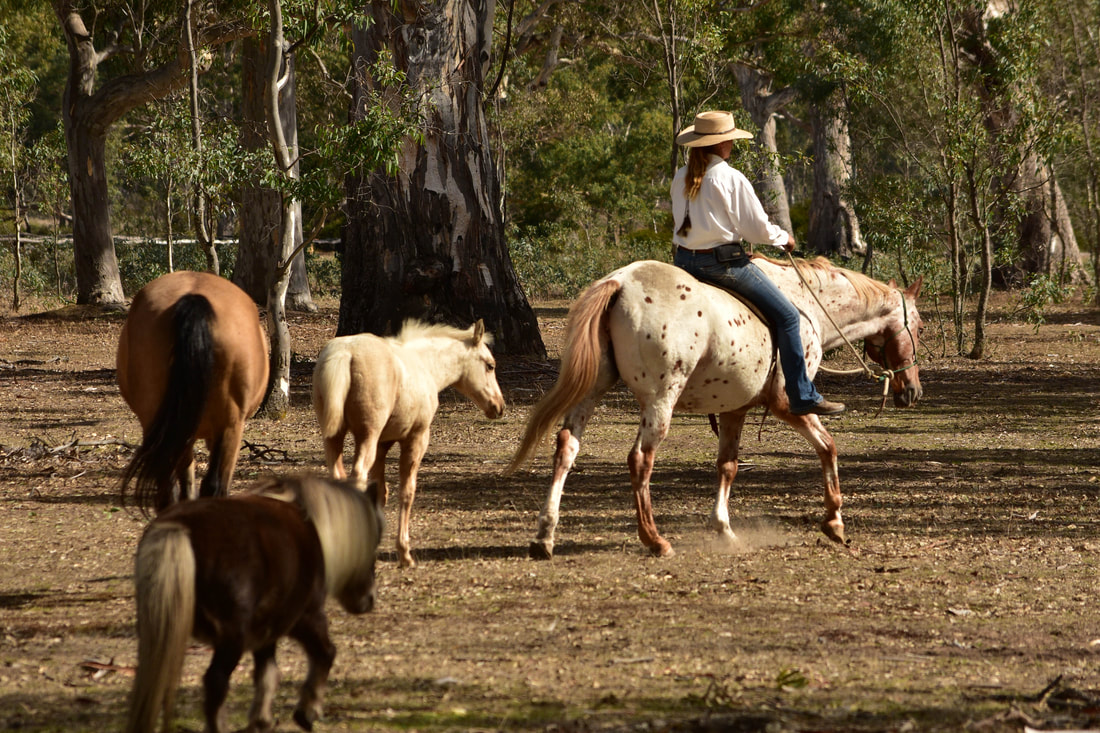
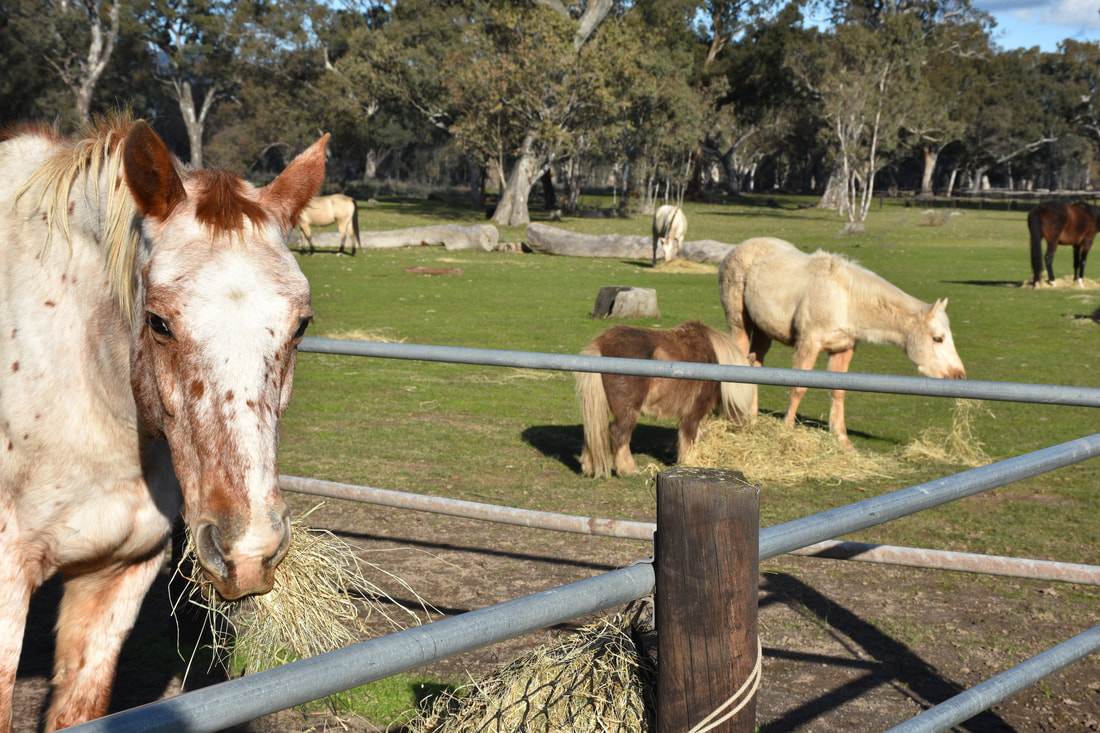
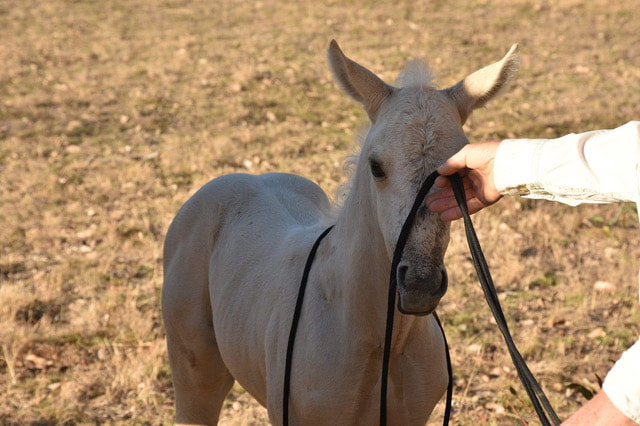
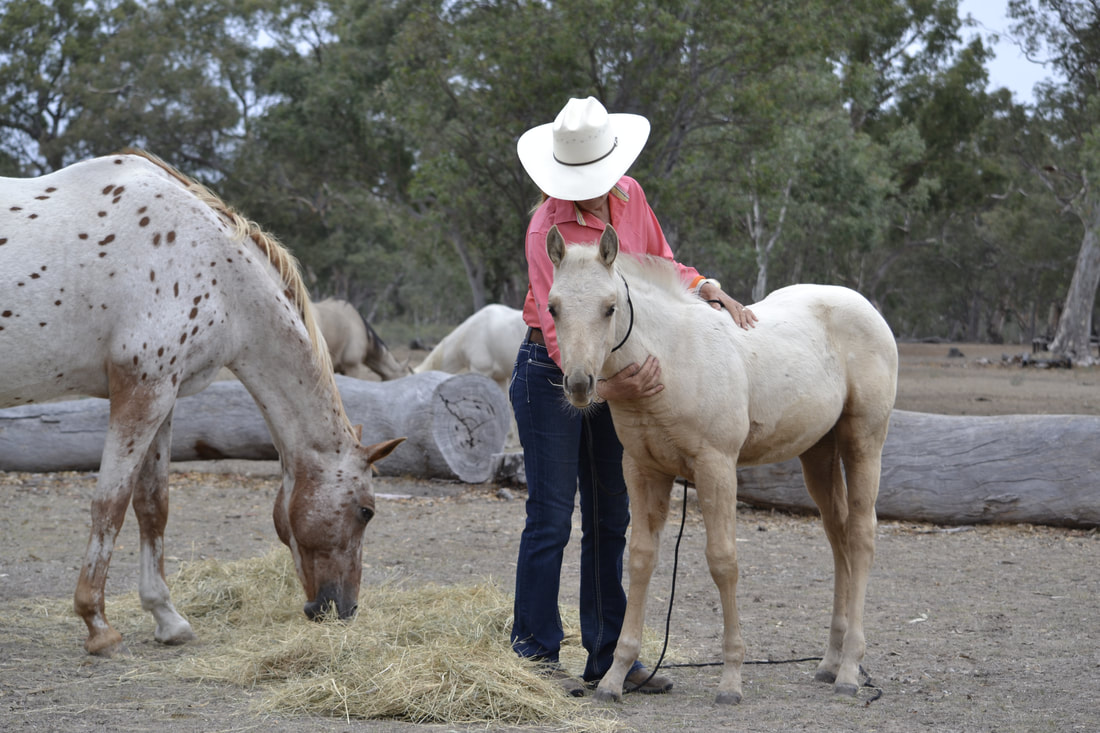
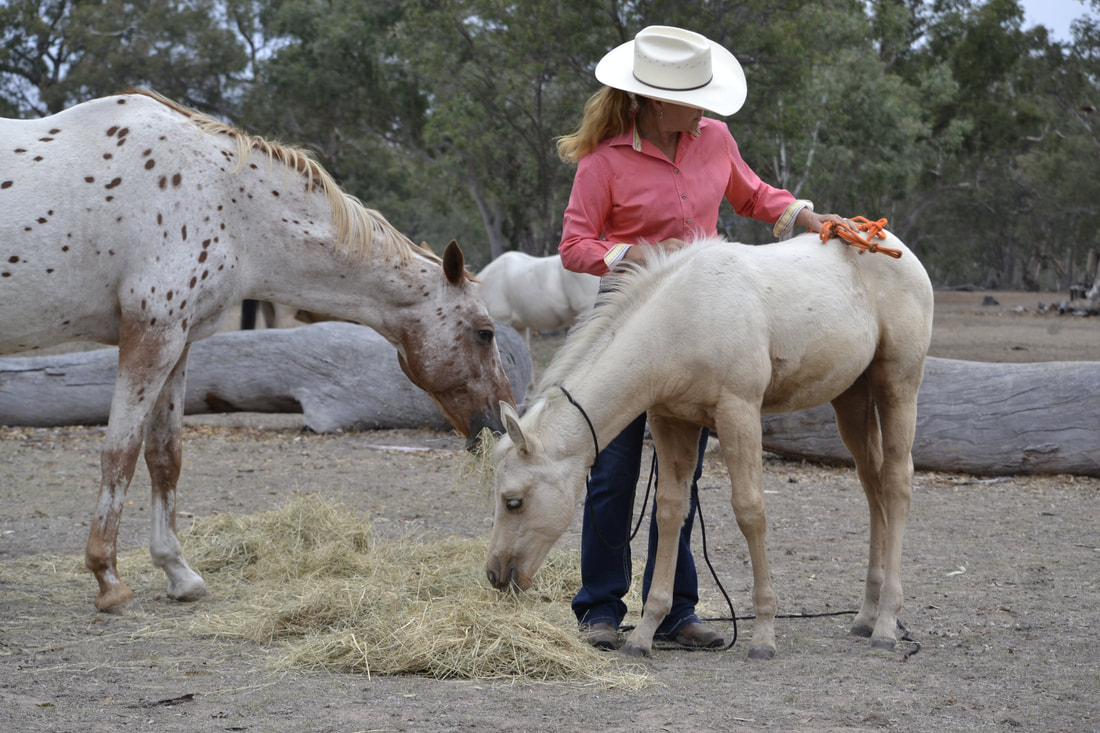
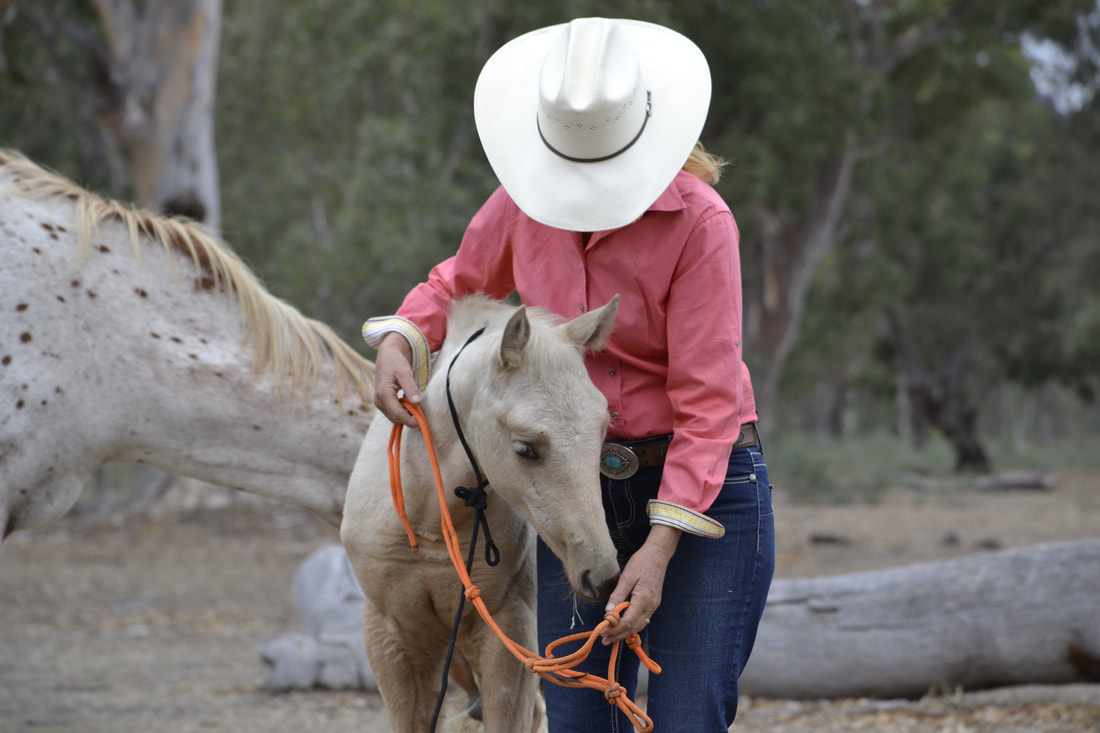
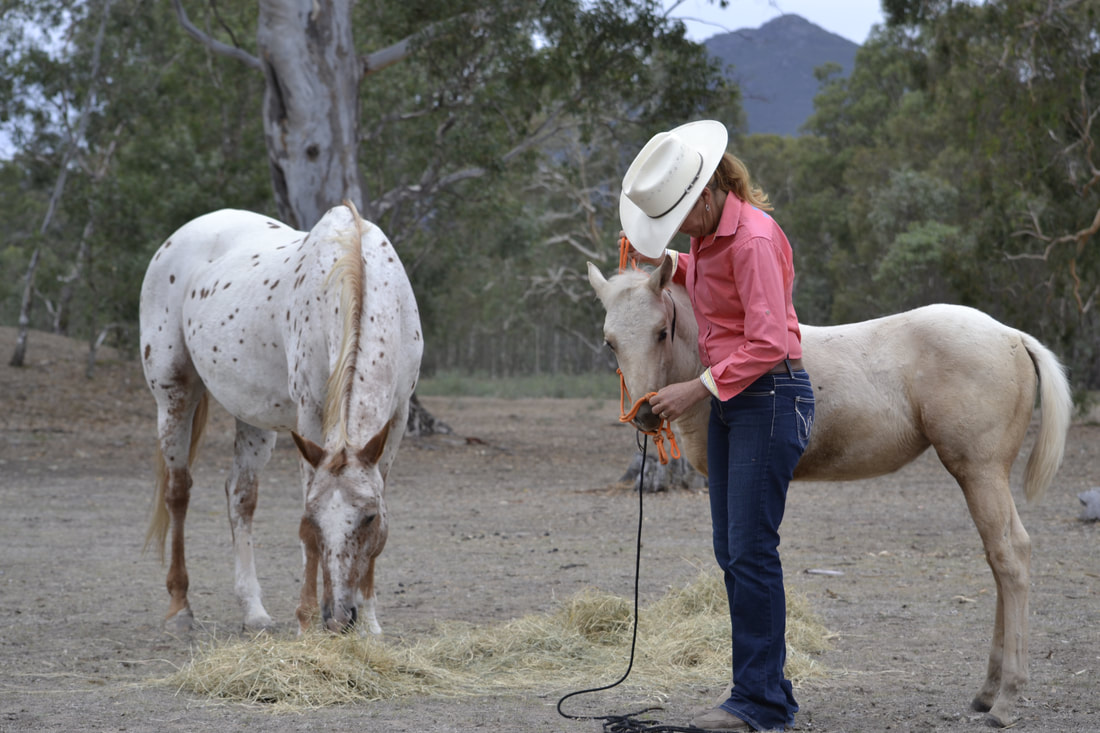
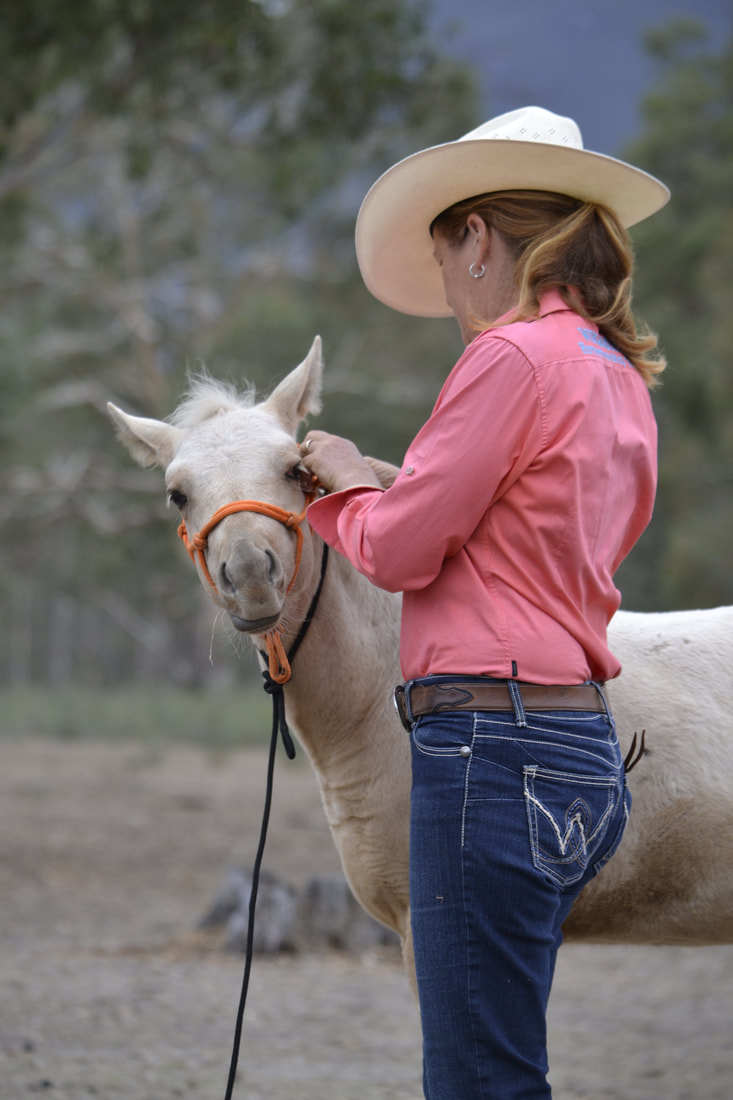
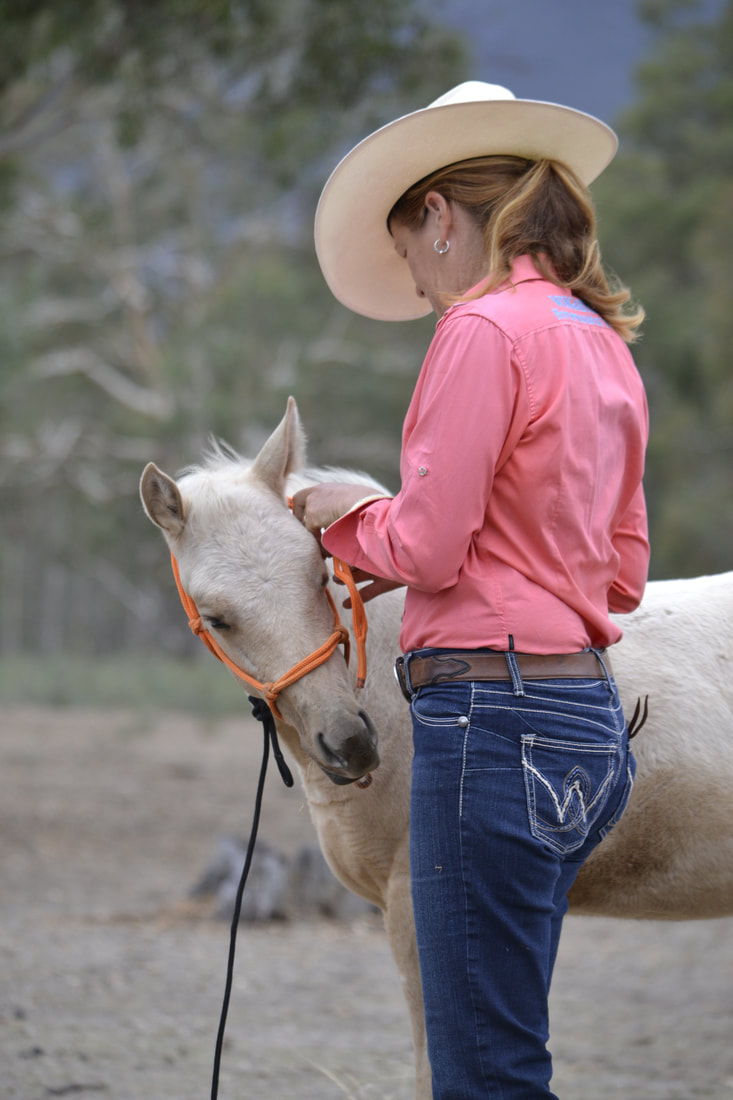
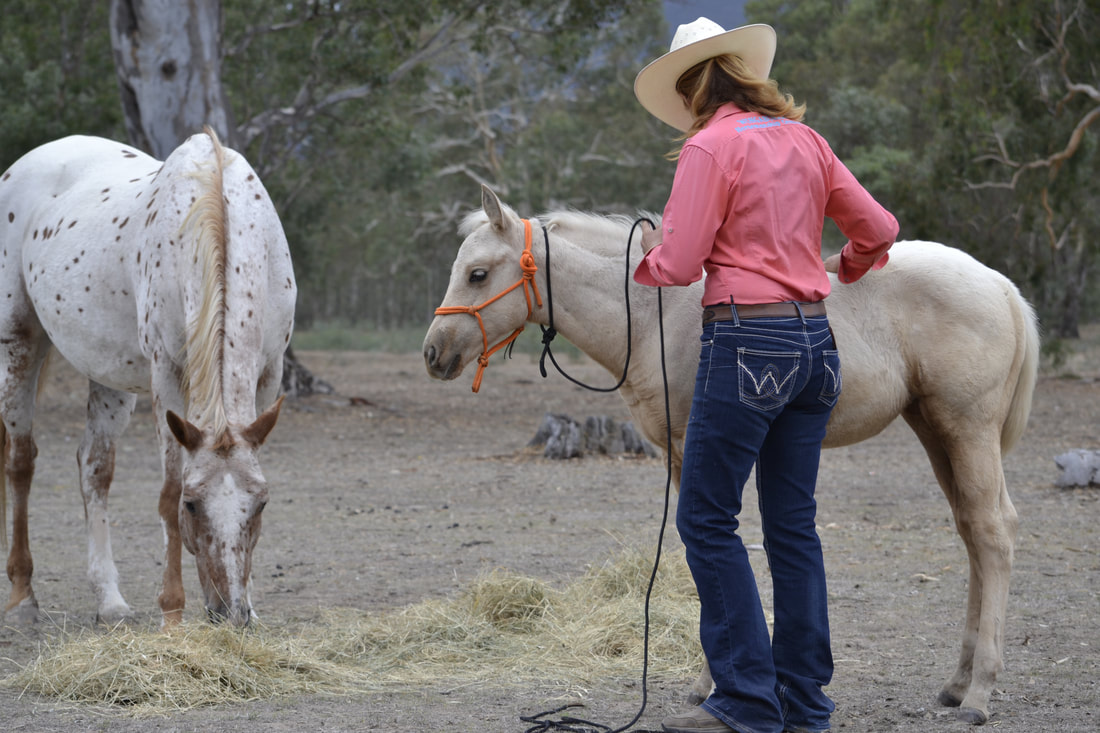
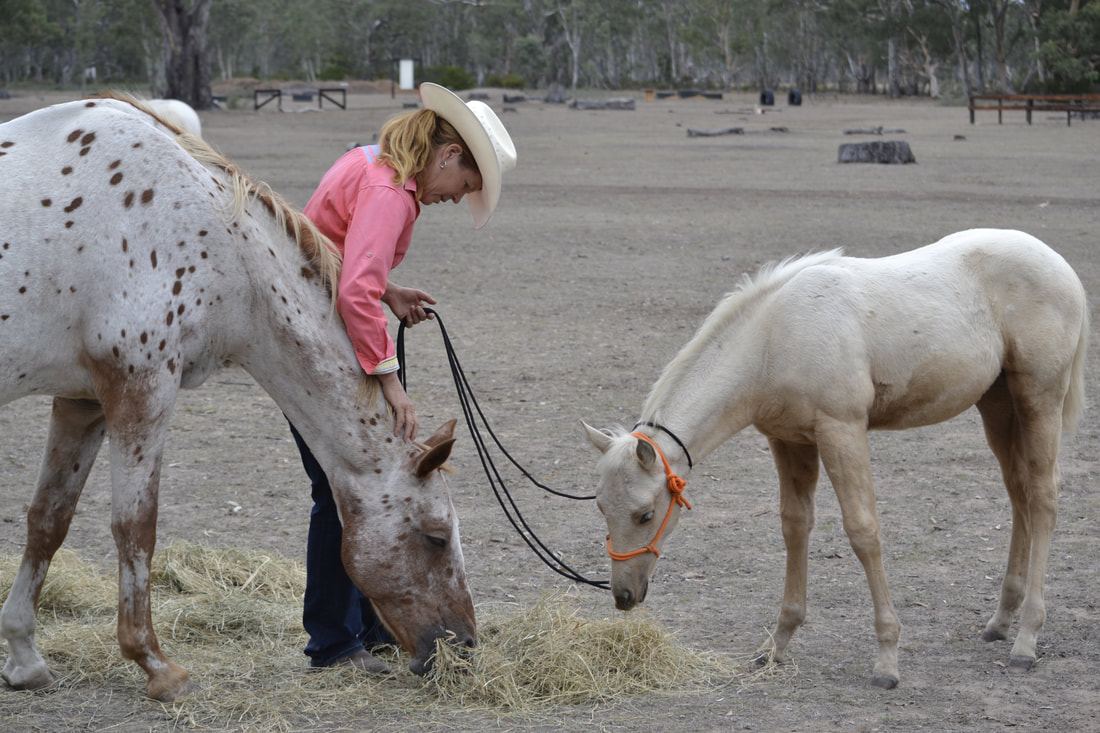
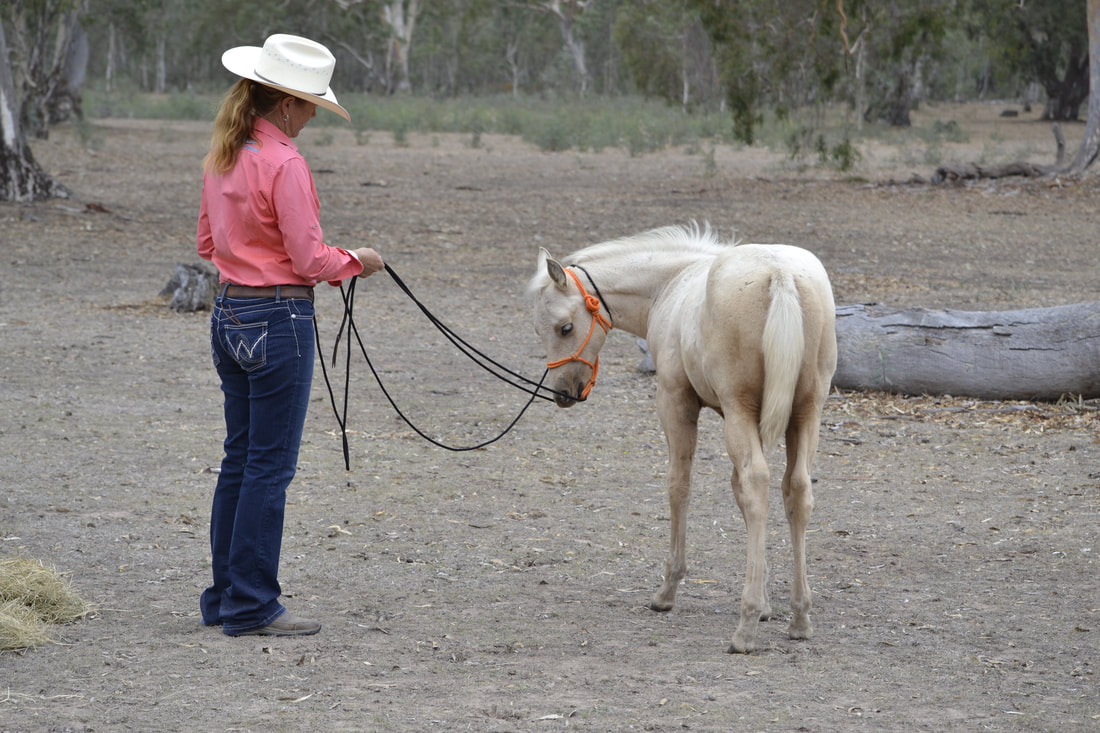
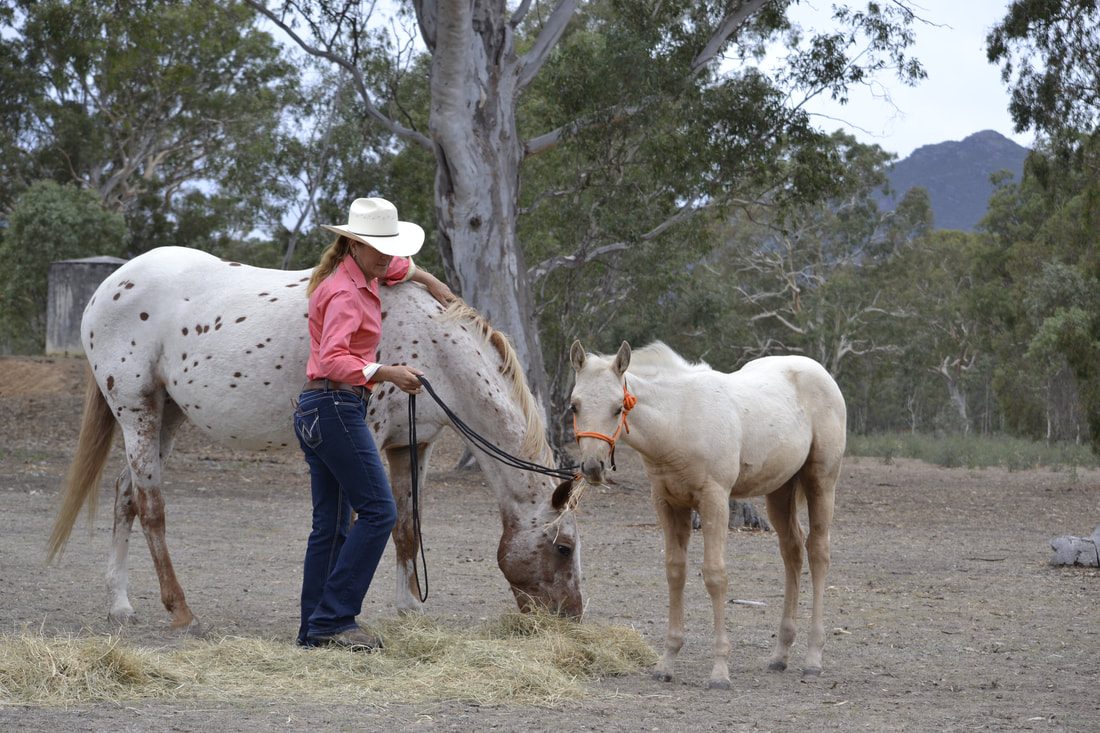
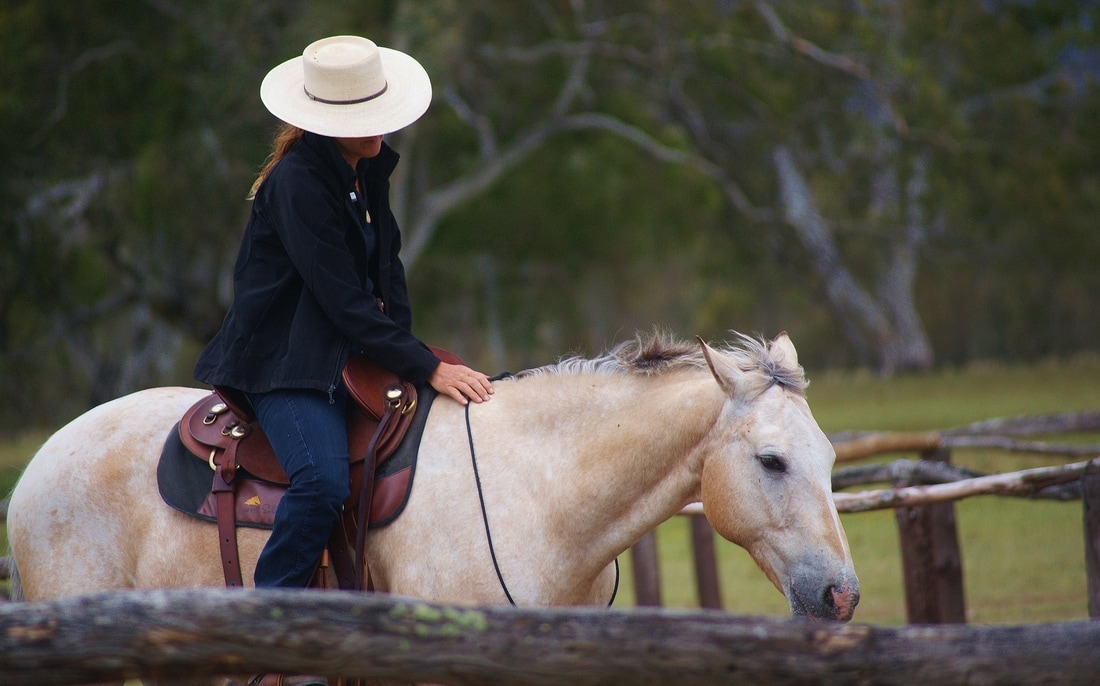
 RSS Feed
RSS Feed